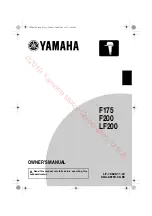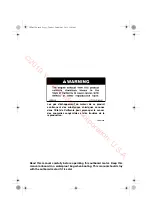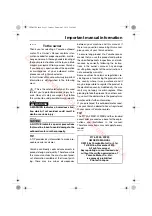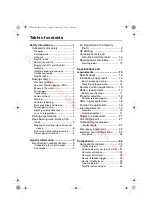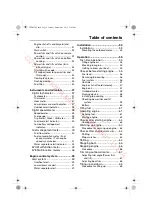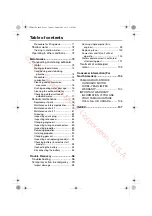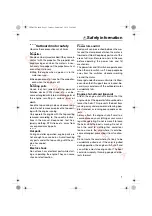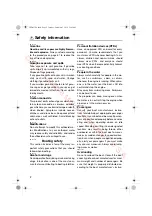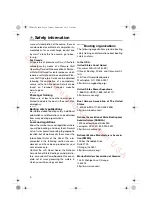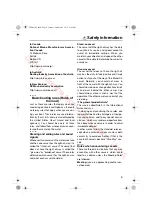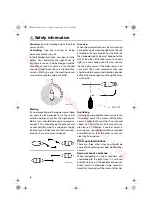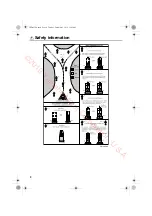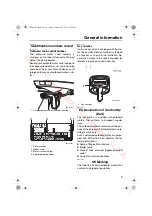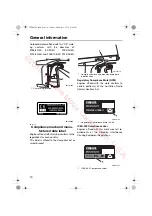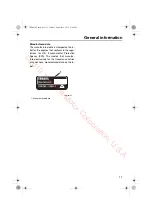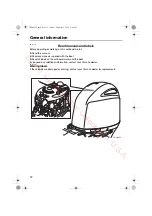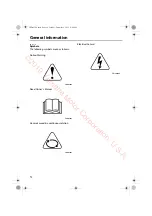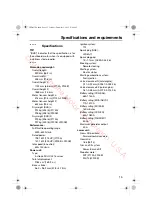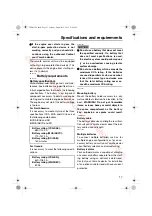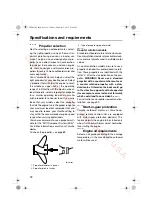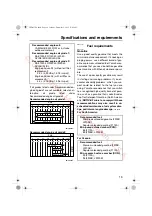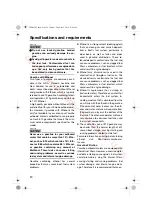
Safety information
5
In Canada
National Marine Manufacturers Associa-
tion Canada
14 McEwan Drive
Suite 8
Bolton, ON
L7E 1H1
http://www.nmma.org/
In Australia
Boating Industry Association of Australia
http://www.biaa.com.au/
In New Zealand
NZ Marine Industry Association
http://www.nzmarine.com/
EMU33692
Basic boating rules (Rules of
the road)
Just as there are rules that apply when you
are driving on streets and highways, there are
waterway rules that apply when you are driv-
ing your boat. These rules are used interna-
tionally. (For U.S.A.: and are also enforced by
the United States Coast Guard and local
agencies.) You should be aware of these
rules, and follow them whenever you encoun-
ter another vessel on the water.
EMU33702
Steering and sailing rules and sound
signals
Whenever two vessels on the water meet one
another, one vessel has the right-of-way; it is
called the “stand-on” vessel. The vessel that
does not have the right-of-way is called the
“give-way” or “burdened” vessel. These rules
determine which vessel has the right-of-way,
and what each vessel should do.
Stand-on vessel
The vessel with the right-of-way has the duty
to continue its course and speed, except to
avoid an immediate collision. When you
maintain your direction and speed, the other
vessel will be able to determine how best to
avoid you.
Give-way vessel
The vessel that does not have the right-of-
way has the duty to take positive and timely
action to stay out of the way of the Stand-On
vessel. Normally, you should not cross in
front of the vessel with the right-of-way. You
should slow down or change directions brief-
ly and pass behind the other vessel. You
should always move in such a way that the
operator of the other vessel can see what you
are doing.
“The general prudential rule”
This rule is called Rule 2 in the International
Rules and says,
“In obeying and construing these rules due
regard shall be had to all dangers of naviga-
tion and collision, and to any special circum-
stances, which may render a departure from
the above rules necessary in order to avoid
immediate danger.”
In other words, follow the standard rules ex-
cept when a collision will occur unless both
vessels try to avoid each other. If that is the
case, both vessels become “Give-Way” ves-
sels.
EMU25522
Rules when encountering vessels
There are three main situations that you may
encounter with other vessels which could
lead to a collision unless the Steering Rules
are followed:
Meeting:
(you are approaching another ves-
sel head-on)
U6DA33E0.book Page 5 Tuesday, December 1, 2015 11:02 AM
©
2019 Yamaha Motor Corporation, U.S.A.

